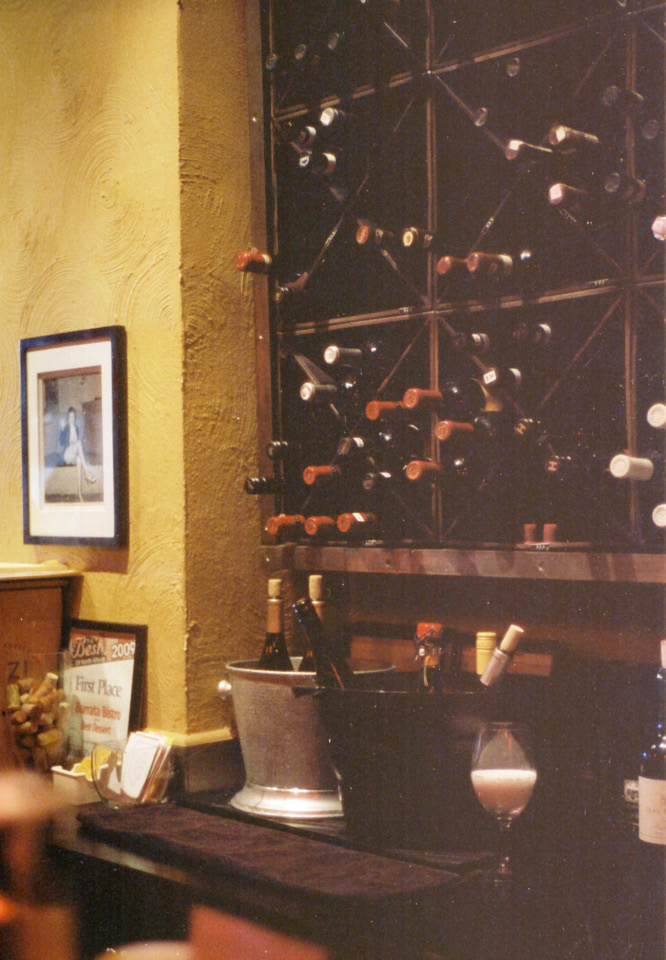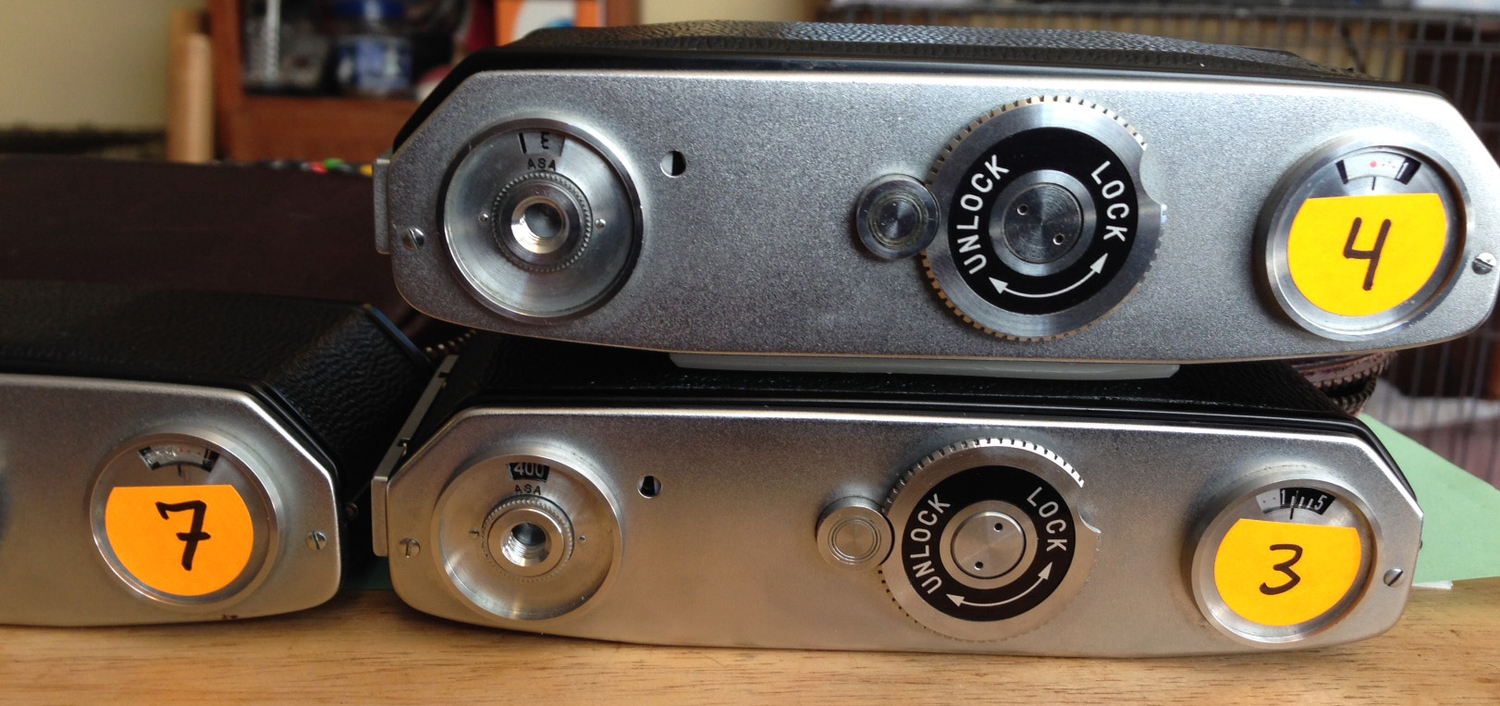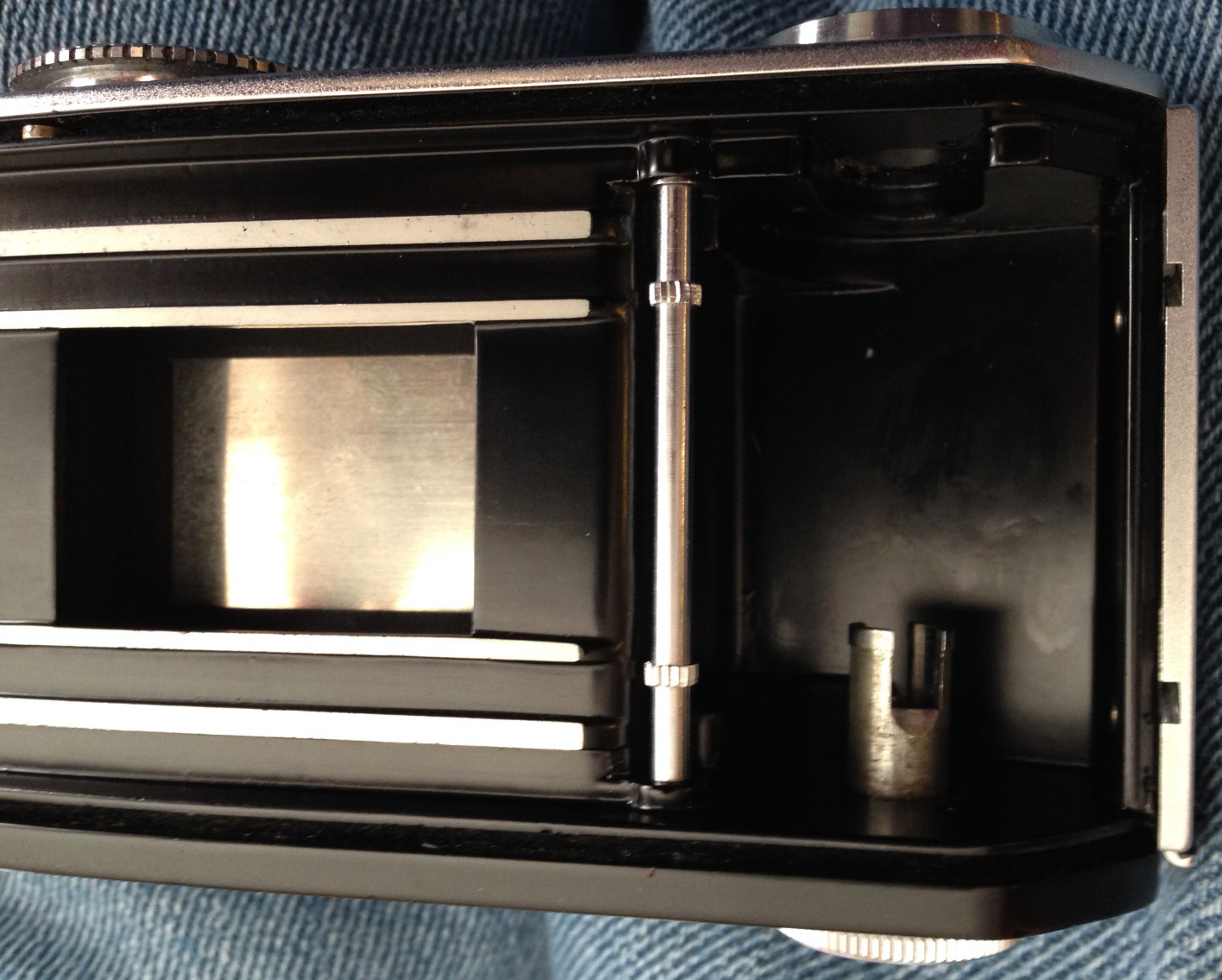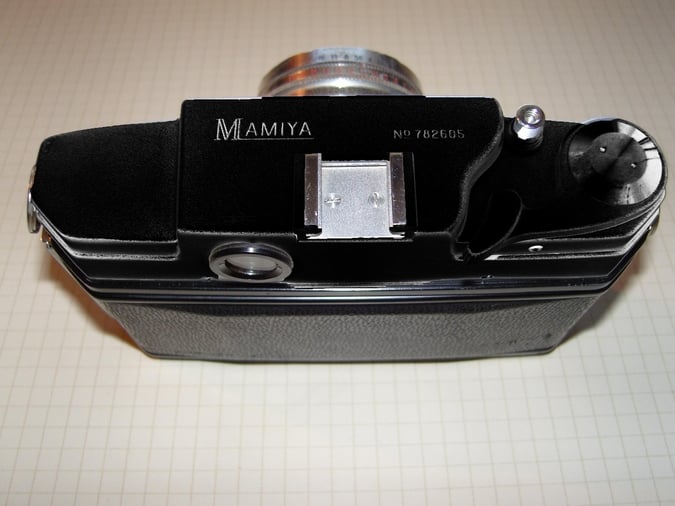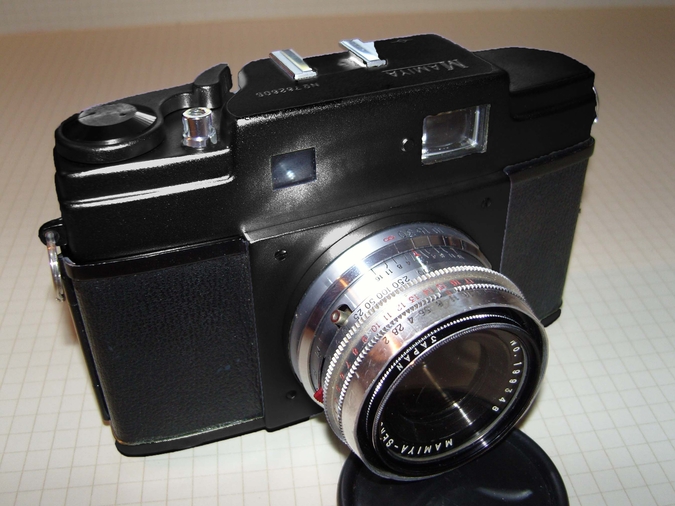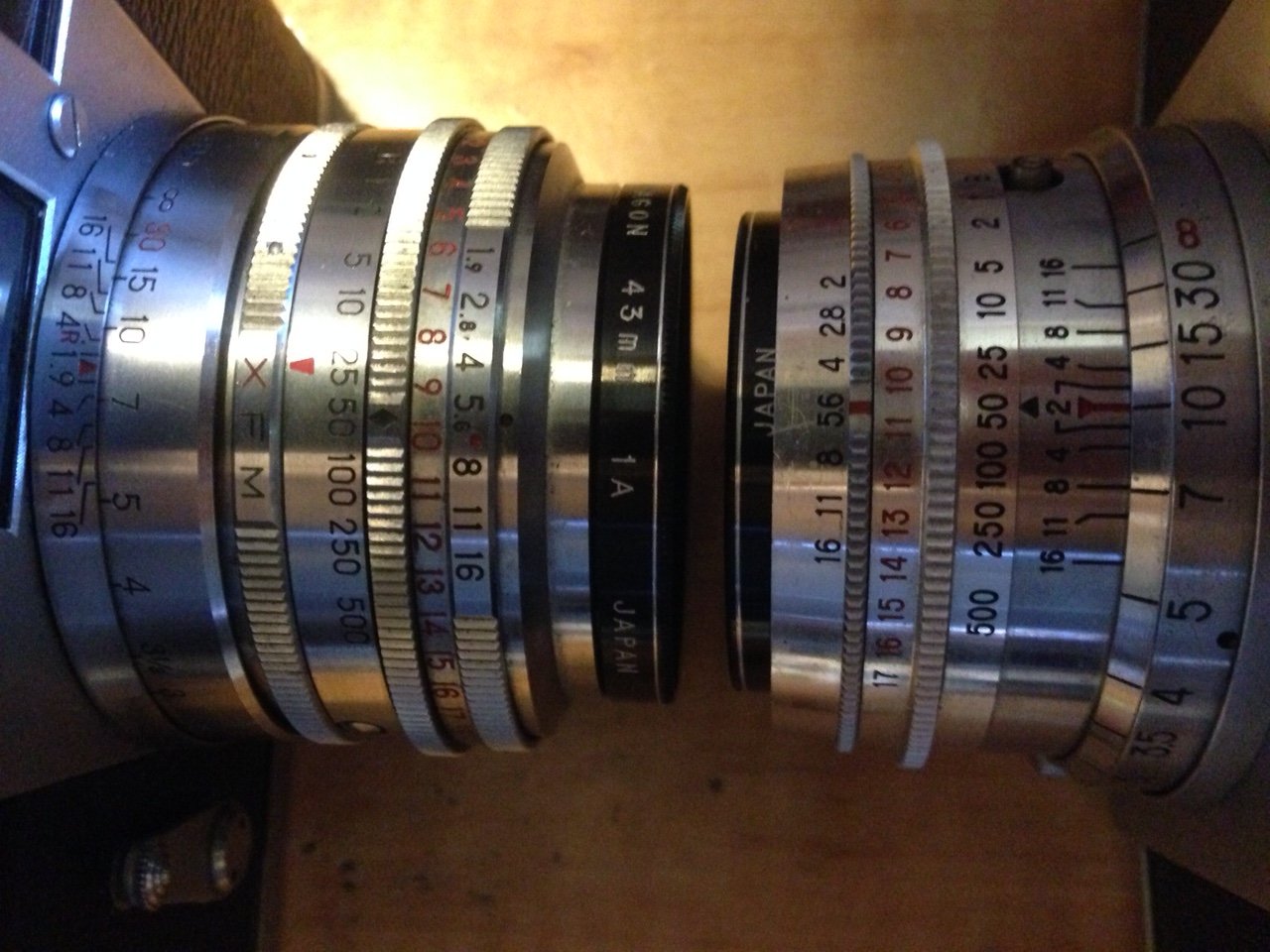Had to review the good advice here from a while ago... thanks Brett
No worries, it's an interesting camera
The speed control ring will be connected by a tab or peg or similar to the control cam inside the shutter that manipulates the pins for the escapement etc. to set the various combinations that produce all the various speeds. What may therefore be a concern is that, with the rings on the two shutters being reversed, certain parts inside may be a mirror image of each other. The speed cam, certainly, unless it is capable of being fitted either way (upside down, as it were). I don't know, not having ever been inside one but I suppose it's possible and would make mirror versions easier and cheaper to make.
What did Chris have to say about the models involved? Is he willing to have a look at them?
If you would like to have a go yourself, in your shoes, I suppose I would approach it the same way I would with a cranky Compur. Get the lens glass out of the front, take the front cover rings etc. off, and if practicable (it generally is) have the shutter in a state ready to go (cover rings off, speed cam installed etc.) so that you can cock and fire it and observe it in operation. Starting with the Aires, I suppose, if it is basically working.
One possibility I've never tried (I've actually just thought of it myself) might be to record some video footage of the shutter being actuated. I'm not much good with video but, if it is possible to pause the footage or frame by frame it, then perhaps it may be of some assistance when you are trying to pinpoint what makes the Aires shutter basically work but the Mamiya item not work. In any case, take some sharp, detailed images of the camera as you take the parts off the front. They can be a great aid to memory when re-assembing them. And also by enlarging the images on your computer monitor, occasionally you will notice problems you might not spot when you're examining the actual shutter. A digital magnifying glass, if you like.
Given enough patience, it is sometimes possible to fix an item from scratch. However, a process that is often faster and effective is to compare a fault with a known good item and, following from that, substitution of parts step by step until the fault has been isolated. Hence, I'd take a look at a shutter that is basically running, if I had one on hand (and you do, even if it is not completely identical) and then I would take a close look at the Mamiya, seeking differences in condition (or even, presence) of parts. If there is a part that the Mamiya is missing or which is bent, worn, etc. these are the sorts of clues that are likely to get it going again.
You have a pretty hard task in some ways. It is quite one thing to save an original example that has a bit of wear or needs cleaning. If the camera was any sort of quality when new, the proposition that if it worked well once it can be made to work well again, is pretty reasonable. On the other hand, if it has been meddled with, and badly, all bets are off. I'll give you an example.
I'm rather fond of German cameras, and M42 SLRs, too. Although I've specialised in the Contaflex SLRs for a while, it was probably inevitable that sooner or later I'd want another German SLR, that is both a Zeiss Ikon and M42: one of their Icarex TM models which Stephen (Gandy) speaks so highly of. But they can often be rather pricey on eBay. Happily I found a reasonably priced one listed in France that was tidy enough but needed a bloody good clean. The seller hadn't offered postage to Australia, but, after a polite request to do so he agreed to sell it to me, (and I duly left glowing feedback, he was great).
Problem was that, on arrival, the camera wasn't very functional. It would cock and fire, but the slow speeds stuck and there were a few other problems. I got the speeds working, but the curtain timing was off. In itself, this wasn't so hard to sort out, EG. the springs had lost a little tension over the years, and needed just a little boosting at their ratchets after cleaning the spindles. All good, so far. But the reflex mirror simply descended way too soon, before the second curtain was anywhere near finished closing the film gate.
I figured the mechanism had developed a fault or wear. The Icarex mirror mechanism is a bit strange. Not unique, perhaps, but odd nonetheless. The second curtain gear releases a straight rod that flips back to front through and vice-versa through a slot on the mirror bracket. As the rod slides up and down in the slot, it slides the mirror up and down. Not exactly a sophisticated approach, but one that ought to work. So I tried to correct the mirror timing by adjusting the linkages that actuated the rod, adjusting the position of the bracket that the rod is mounted in, and even the shape of the rod itself. Plus two or three other adjustments I can't even remember now. All of them got the mirror timing delayed more, but, none actually set it late enough to not obscure the top of the film gate towards the end of the exposure. I must have spent a eight hours, all told, before I nailed it.
During the whole time, I'd pondered the position of the gear driven by the second curtain shaft, wondering if I could make the mirror time correctly simply by adjusting the timing of the gear, and hence, the peg on its top that tripped the linkage to release the mirror. But, I told myself that the problem must be elsewhere, because, as installed, the gear timing had to be correct. After all: who would install such a gear with the timing completely off?
Eventually, after a great deal of searching, I found a photo of (I think, a Rollei 35mm SLR) with the lower cover removed. Not an identical camera to the Icarex, but it was based on it, and had the same mirror mechanism. Well, you can guess where I'm going: the gear timing was completely different. All the time I'd spent trying to adjust the mirror right at every other place in the actuation process was needless, because someone, at some point, had simply fitted the drive gear completely out of time. By setting the timing up as per the photograph, the mirror proceeded to work perfectly, and I then had to set all the other adjustments I'd done back to standard, as they simply weren't needed. I've since run a roll of Delta 100 through the Icarex and love it, it is a gorgeous camera.
That was rather long winded, sorry. But it illustrates just how unpredictable your chances of success can be, when you're trying to resurrect a camera that has been buggered around with by someone else. Yes, it's frequently do-able, but it is a real lottery as to how long it can take, or what the problem is ultimately going to be. You can't assume anything and have to start from basics. Hence, if you can look to a mechanism that is actually functioning, it is a massive edge, because by working backwards from that state with the patient, hopefully replicating the condition of the working example will result in the same outcome.
The last thing I would recommend (if you've not already done it) is to do a google search for hits to other models using the same type of shutter as the Mamiyas and then, with a list of candidated, cross reference any hits you can find for repair articles, forum posts, etc. about repairing any of these. Not all the comments you find will necessarily be correct, but I always do at least a quick look before starting on an unfamiliar mechanism, because it can often save time.
This is an interesting project, so I appreciate the updates. I hope you get there.
Cheers,
Brett




